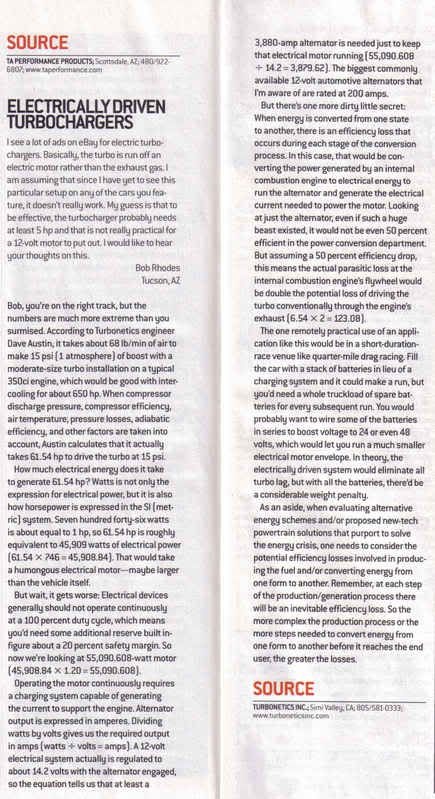proof that magazine editors dont know everything either, very nice.
most EV conversions use motors ranging around the 60HP continuos duty cycle department (meaning well over 100HP peak). obviously since people still ride in these cars, the motor isnt anywhere NEARLY as big as an entire vehicle (usually about 10" in diameter and a few feet long).
electric motors are not designed to be continuously run at their peak power (which is why they arent rated with the same system used by ICE's). however, the editors example of 61HP to create 15PSi of boost is only accurate when the engine is flowing its maximum CFM...I.E. WOT at its peak HP RPM. under most driving conditions, a motor controller could be used to reduce power to the motor, thus supplying fewer amps and still maintaining 15PSI most of the time...and only ramping up to full juice during the occasional WOT spurt. this type of useage would be perfectly acceptable for most electric motors (though, it does require the added complication of a motor controller).
however, expecting 15PSI out of an electric supercharger is silly and impracticle (for obvious reasons). i still stand by my claim that a low boost of under 5 PSI for a small displacement V6 or 4 cylinder would be easily achievable with an electric supercharger.
















